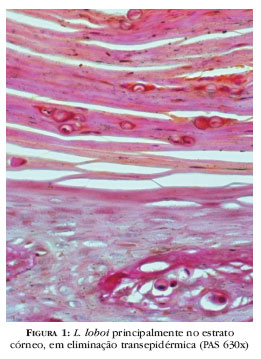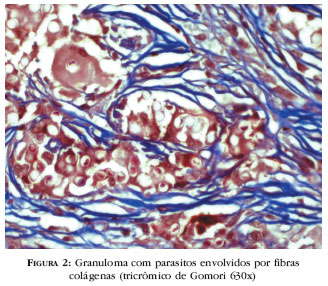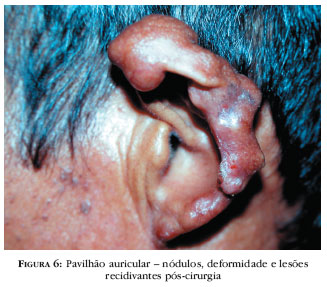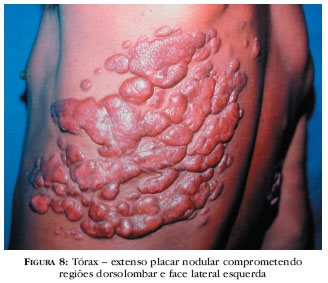Lacaziosis, also known as Jorge Lobo’s disease, lobomycosis and keloidal blastomycosis, is a chronic cutaneous and subcutaneous fungal granulomatous disease, caused by Lacazia loboi - an uncultivated fungal pathogen - characterized by the development of nodular keloidal lesions, particularly on the pinnae, face, upper and lower limbs, and with no involvement of mucous membranes. Most cases in humans were reported in South America, including the Caiabi Indians, in Central Brazil. The disease was described in non-human mammals, such as two species of dolphins (Tursiops truncatus and Sotalia guianensis) inhabiting the coasts of Florida (USA), South America (Suriname River estuary, Santa Catarina-Brazil coast) and Gulf of Gascony (Biscaya Bay, in Europe). The histopathological findings in dolphins were very similar to those observed in humans. The aspects related to the history, etiology, epidemiology and ecology, clinical manifestations, differential diagnosis, immunohistochemistry, pathology, ultrastructural, laboratory diagnosis and therapy of lacaziosis, are presented.
Granulomatous disease, chronic; Keloid; Mycosis











